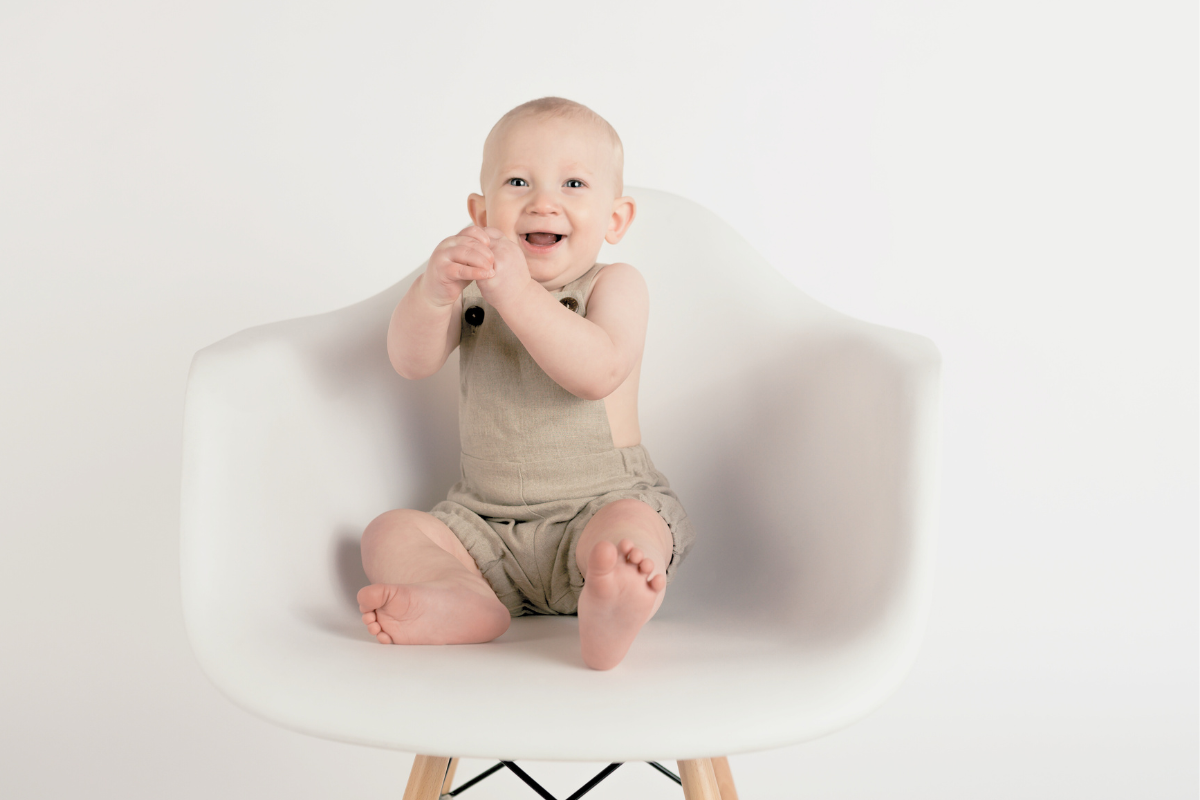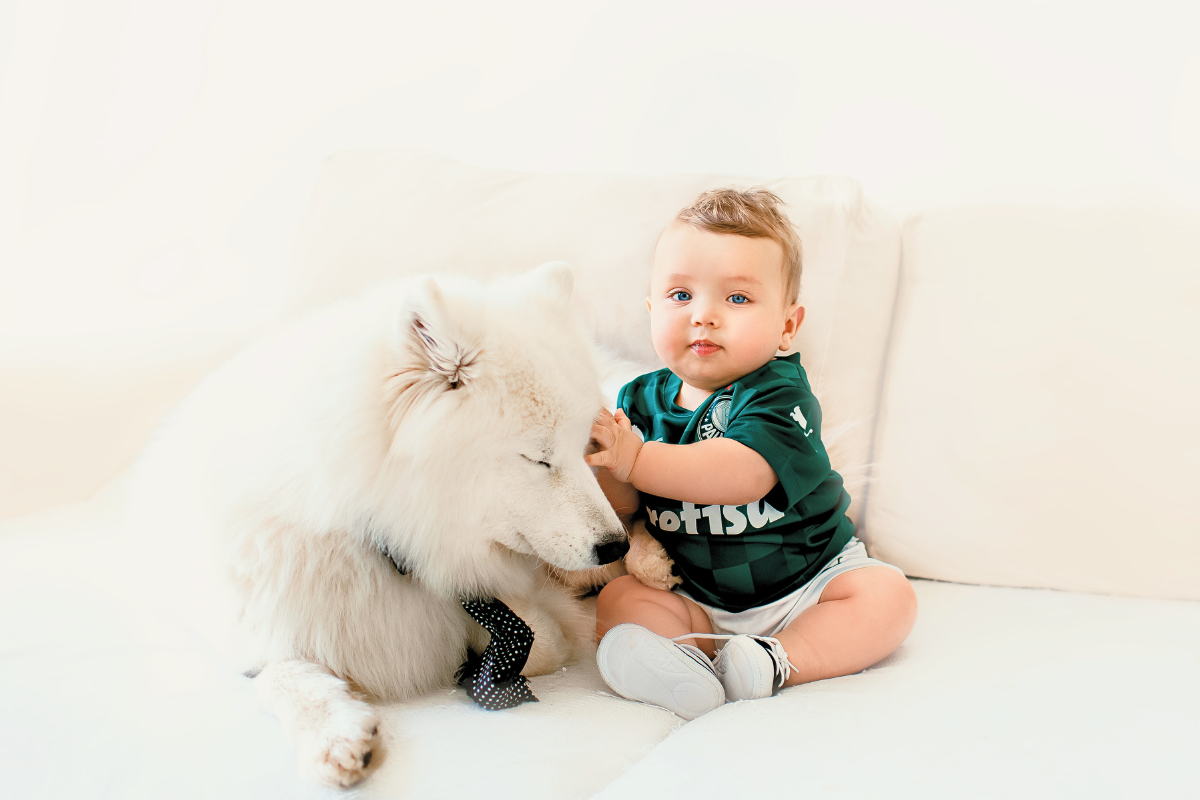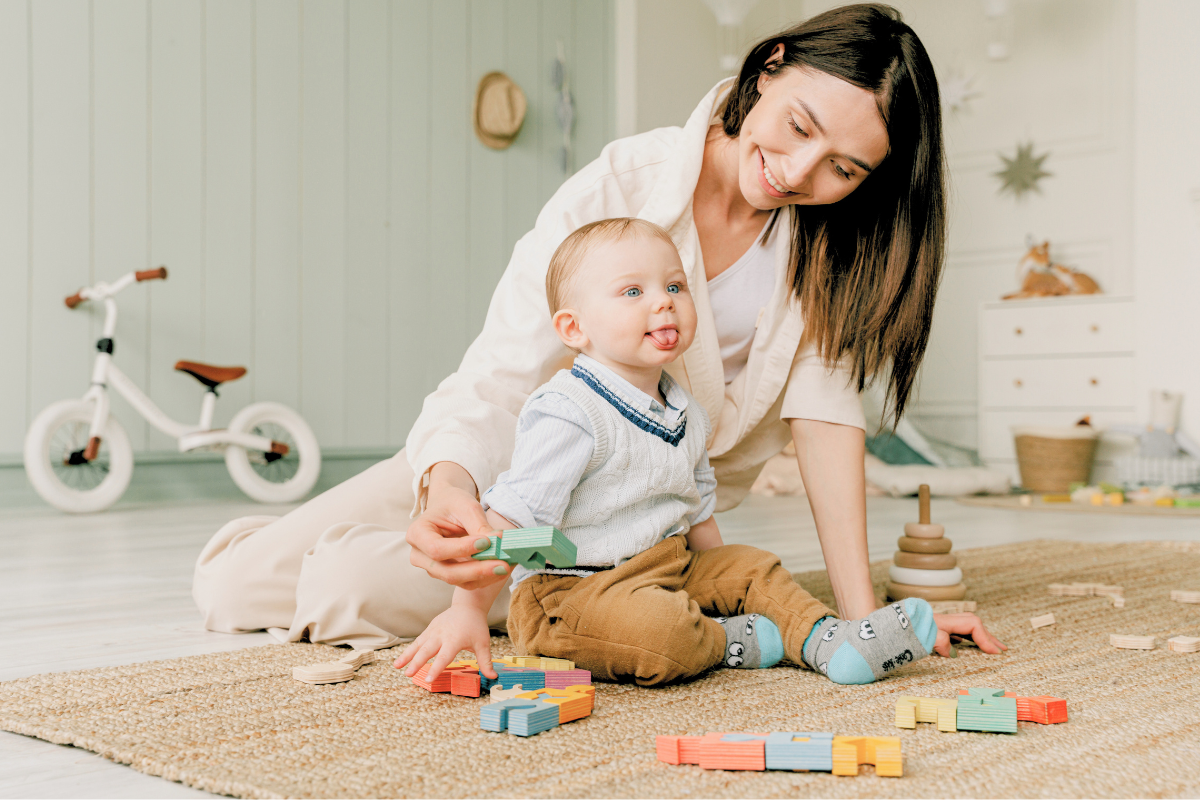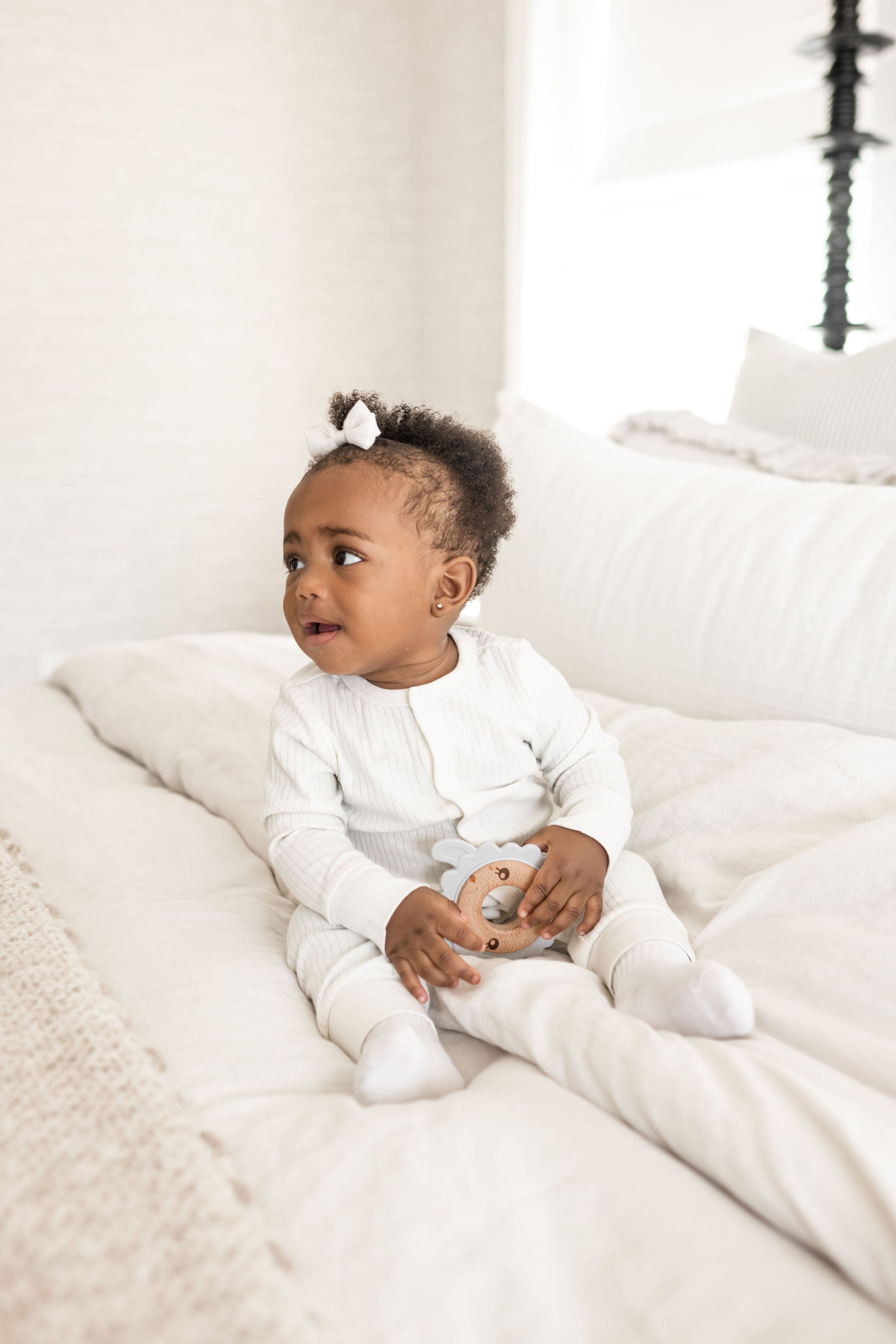When Can Infant Sit Up: Developmental Milestones and Tips
Curious about when your baby will start sitting up on their own? You’re not alone—it’s one of those exciting milestones that signals big changes in your baby’s development.
The journey to independent sitting usually starts between 4 to 7 months, as your baby strengthens their neck muscles, improves head control, and builds upper body coordination. Every baby develops at their own pace, but reaching this milestone opens the door to a whole new world of exploration and learning.
In this guide, we’ll walk you through what to expect, how you can help, and why it’s such a big deal for your baby’s growth.
At What Age Do Babies Start Sitting?

Most babies start working on sitting up between 4 and 7 months, but every baby develops differently and at their own pace. Sitting up requires strong head control, neck muscles, and an engaged upper body. Babies develop these skills gradually, and there’s no need to rush the process.
We'll discuss each milestone in more detail below, but here's the typical timeline in a nutshell based on the Center for Disease Control's (CDC) official guide for baby milestones.
-
4-5 months. At this age, babies can sit with lots of support. Tummy time is helping them strengthen their upper body, and some might start to balance themselves in the tripod position by using their hands for support. This is when babies start coordinating their upper and lower body movements.
-
6 months. By now, most babies can sit with minimal support, using their arms to keep balance. You’ll notice their head control has improved, and they’ll begin to spend more time in a sitting position. They’ll be more curious, reaching out and exploring their surroundings more confidently.
-
7 months and beyond. Many babies can now sit independently without needing to prop themselves up. This is a major milestone in their motor development, and you’ll see them using their hands to play and reach for toys, balancing better, and exploring more freely.
That said, it's very important to continue observing your baby even when they're able to sit unsupported.
A 2010 study published by the National Center for Biotechnology Information (NCBI) found that babies develop their ability to sit by coordinating the movements of their thorax (upper body) and pelvis (lower body). Initially, these parts move together, but as their sitting posture improves, they start moving in opposite directions to maintain balance.
So, if your baby seems to have trouble keeping their balance or if they don’t seem to be developing the ability to sit without support, it might indicate that their thorax and pelvis aren’t coordinating as expected. These are signs that the neuromuscular system may not be fully maturing in sync. This could be a developmental delay that's worth relaying to your pediatrician.
Why Is Sitting an Important Infant Development Milestone?

Sitting isn’t just a cute photo opportunity—it’s a huge leap in your baby’s development, both physically and mentally.
When babies start sitting on their own, it’s like opening the door to a whole new world. They can now observe their surroundings, interact with toys and people, and begin to explore in ways that weren’t possible before. Studies show that independent sitting is closely linked to a variety of developmental skills, including cognitive growth.
Additionally, babies who sit independently have more chances to engage in object manipulation—think of all the toys they can finally grab and explore! This builds their motor skills and helps develop spatial memory as they become more aware of their environment.
One study from 2012 found that babies sitting on their own can practice these skills more often than babies who are still sitting with support, giving them an advantage when it comes to learning and memory.
But it doesn’t stop there. Sitting is also a big deal for social interaction. A 2016 study found that babies who sit independently have more opportunities to interact with caregivers and peers, leading to stronger language development.
And let’s be honest—when babies sit up, they’re suddenly at eye level with you, which makes social exchanges and bonding even easier. It’s these small moments, like mimicking your facial expressions or babbling back to you, that boost their communication skills the most.
So while your baby is working on this new skill, remember that sitting is more than just a milestone—it’s a stepping stone to a whole range of cognitive, motor, and social benefits that will support them for months (and years) to come.
Early Signs to Watch For Before Babies Sit Up

Watching your baby develop their motor skills can be both exciting and a little nerve-wracking. We went through the same thing with our little ones—and we definitely watched out for milestones like a hawk.
But before they hit this baby sitting milestone, there are a few early signs that tell you they’re getting closer. These common signs give you a peek into how your baby’s motor development is going and when they’re likely to start sitting independently.
1. Head Control
One of the earliest signs that your baby is on their way to sitting up is when they gain head control. By 2 to 3 months, you’ll notice your baby lifting their head during tummy time and holding it steady for longer periods.
By 4 months, many babies can keep their head upright when you sit them up with support, which is a big deal since strong neck muscles and steady head control are needed for upper body balance.
2. Rolling Over
At 4 to 5 months, most babies can start rolling over from their tummy to their back, and eventually, back to their tummy.
This motion helps strengthen their core, shoulders, and arms—muscles that are crucial when babies begin to sit. It also shows they’re building the coordination needed for sitting position control.
3. Propping Up

Around 5 to 6 months, babies begin to prop themselves up on their hands during tummy time, or even sit in the tripod position, where they sit leaning forward with their hands on the ground for support.
This strengthens their core and helps them practice balancing in different positions, all of which are essential for when they’re ready to sit up on their own.
4. Showing Interest in Sitting
Your baby will start showing an interest in sitting up by trying to pull themselves up when you place them in a seated position. You’ll also notice them reaching for toys more actively while lying on their back or stomach.
They’re starting to connect their movements with their surroundings, showing they’re almost ready to sit up on their own.
5. Reaching and Grabbing
A big sign that your baby is almost ready to sit up is when they start reaching and grabbing objects while lying on their back or stomach. This movement shows that their upper body muscles are developing and that they’re gaining more control over their core.
Reaching while on their tummy helps build balance and coordination, which they’ll need to maintain a sitting position without support.
Babies Sitting Position Milestones

Babies don’t sit up independently overnight—it’s a process, and they go through several sitting positions before mastering it. Each position marks a significant step in their motor skill development.
Let’s break down these sitting positions so you can watch out for them as your little one grows. And yes, we'll also talk about the infamous W-sitting—spoiler: it's not a good thing!
1. Sitting with Support (3 to 5 Months)
In this early stage, your baby needs plenty of support to sit up. During tummy time, try holding them around the ribcage to keep them steady when they sit. Don’t worry—this is perfectly normal, and they’re working hard to build those back and neck muscles needed to begin sitting on their own. As they grow stronger, you can start loosening your grip and let them balance a little more on their own.
-
What’s going on? Your baby is learning to use their core muscles while you keep them sitting upright. Babies learn to hold their head steady at this point, which is key to maintaining balance.
-
How to help: Give your baby plenty of time. Keep it short and sweet at first—just a few minutes is enough to start. Try engaging them with fun toys to grab and explore, like Poppyseed Play's Animal Style Teethers.
2. Prop Sitting (4 to 6 Months)
At this stage, your baby will start prop sitting, which means they lean forward and use their hands to balance themselves. They’ll still need some help from time to time, but you’ll notice they’re able to keep themselves upright a bit longer each time.
-
What’s happening? Babies are strengthening their core and learning how to balance without completely toppling over. Their go-to is the tripod sitting position, where their hands are in front of them for balance.
-
How to help: Surround them with soft cushions (or wrap a pillow around their waist) to make their tumbles a little softer. Consider using the Poppyseed Play Baby Gym so that they'll have something to grab onto with one or both hands just in case.
3. Wobbly Sitting (5 to 7 Months)

Welcome to the wobbly sitting phase, where your baby is trying hard to balance without using their hands. They might sit up for a bit and then tip over, which is completely normal. Their balance reflexes aren’t fully developed yet, so you’ll want to stay close to catch them.
-
What’s happening? Your baby is figuring out how to sit without tipping over, and every wobble helps them build strength and improve balance.
-
How to help: Let your baby practice but sit behind them and use your legs to form a little barrier. This keeps them safe without limiting their movement. You can also use a nursing pillow around their hips for gentle support while they wobble their way to better balance.
4. Independent Sitting (6 to 8 Months)
Here’s where things get really fun! Your baby can now sit upright all on their own. They don’t need hand support anymore and can reach for toys, move around a bit, and explore their surroundings without falling over.
-
What’s happening? They’ve developed enough strength in their upper body and core to keep themselves upright and balanced. Plus, they’re able to turn, twist, and move while maintaining control.
-
How to help: Spread age-appropriate toys around them in different directions to encourage them to reach, turn, and grab. These movements help strengthen their muscles even more as babies learn to sit by themselves.
5. Functional Sitting (7 to 11 Months)
Now that your baby has mastered sitting independently, they’re ready for functional sitting. This is when they start transitioning smoothly between sitting, crawling, and lying down—all by themselves. They’ll also begin reaching for toys placed farther away, helping them build muscle strength and coordination.
In fact, as babies develop, their ability to explore and interact with their environment grows. According to a 2023 study, babies initially focus on fine motor skills, like reaching for and manipulating objects, while sitting.
But as they progress to crawling and standing, they use more varied postures—such as kneeling and squatting—to explore objects and engage with their environment more actively. This shift in motor skills opens up new opportunities for them to learn, play, and strengthen their physical and cognitive abilities.
-
What’s happening? Your baby is getting stronger and more coordinated, which allows them to move in and out of different positions with ease. They’re no longer relying on you to put them in a sitting position.
-
How to help: Scatter toys around the room to encourage movement. Give them space to crawl, sit, and explore at their own pace.
Avoiding the W-Sitting Position

One position you’ll want to avoid is W-sitting. This is when babies sit with their knees bent and feet pointing outward, making their legs form a “W” shape. While it might look comfy, it can actually cause issues with core strength and muscle development in the long run.
-
Why it’s bad: W-sitting places extra strain on your baby’s hips and knees and can make it harder for them to rotate their torso, which is important for overall motor development.
-
How to help: Gently correct their position when you see them sitting in a W shape. Encourage them to sit with their legs crossed, out in front of them, or to the side.
Top 5 Activities to Help Baby Sit
Sitting ability can vary widely between babies, particularly across different cultures. A 2015 study observed 5-month-old infants from 6 countries. While only 17% of US babies could sit independently at this age, 67% of Kenyan babies and 92% of Cameroonian babies were able to do so. These differences were linked to how much time babies spent sitting unsupported, as babies in Western countries were often held or placed in a supportive baby seat more often.
What this means is that you can influence your baby’s sitting ability by creating more opportunities for them to strengthen their muscles and practice sitting. In fact, giving them the right activities can make all the difference in their progress.
1. Tummy Time
Tummy time is the foundation for developing head control, strong neck muscles, and upper body strength. It’s critical for your baby to start building these muscles early—ideally, within their first few weeks. Begin with a few minutes a day and gradually increase as they get more comfortable.
-
Quick Tip: Turn tummy time into playtime! Place a mirror on the ground for your baby to look at or use a soft rattle to catch their attention. You can even get on the floor with them and cheer them on. They’ll love the interaction, and you’ll get some great bonding moments in the process. Make sure to use Poppyseed Play's Padded Play Mats to make tummy time more comfortable and engaging.
2. Assisted Sitting
Around 4 to 5 months, your baby will have developed good head control, and you can start practicing assisted sitting. Hold them securely on your lap and gently rock them back and forth. This helps them balance their upper and lower body and prepares them for independent sitting.
-
Quick Tip: The Poppyseed Play Baby Gym with hanging toys is perfect for this! Place your baby under the gym while sitting. Let your baby learn to reach up and gently pull the toy. This simple act will strengthen their core and improve their balance. Plus, their excited little faces when they succeed? Priceless.
3. Floor Sitting with Support
Once your baby is a bit stronger, you can try floor sitting with support. Sit on the floor with your baby between your legs or surrounded by pillows. Gradually reduce the support as they get better at balancing. This step helps them learn to sit on their own without toppling over every few seconds.
-
Quick Tip: Try using soft cushions around them in a circle. It creates a safe boundary and helps them feel more secure. You can also place a few of their favorite toys nearby to encourage movement and balance. The more fun they have, the more motivated they’ll be to sit up.
4. Interactive Play

Playtime is the best time to encourage sitting! Face-to-face games like peek-a-boo or offering toys within arm’s reach naturally engage your baby’s upper body and core muscles. It’s also a great way to make sitting up a positive and playful experience.
-
Quick Tip: Try sitting in front of your baby and rolling a soft ball toward them. As they reach to stop the ball, they’ll be working on balance and strength without even realizing it. Bonus: it’s a great bonding activity for you both!
5. Positioning Exercises
Positioning exercises are an excellent way to help your baby learn to sit up. Prop them up with rolled towels under their back or shoulders to help stabilize them. You can also place them on their side to develop their hand-eye coordination and give them a different perspective to explore.
-
Quick Tip: You can turn this into a game! Dangle interesting toys just out of reach to encourage them to stretch or roll over. Be there to cheer them on—your encouragement goes a long way in boosting their confidence and skills.
When To Consult For Delayed Sitting Skills
As we've mentioned above, independent sitting is more than just a physical milestone. Research shows that babies who sit independently gain social benefits and have more chances to learn and engage with their environment.
However, delayed sitting can sometimes signal underlying issues in your baby’s motor development or neuromuscular system. If your baby isn’t hitting certain milestones, it may be worth speaking to a pediatrician, who can redirect you to pediatric physical therapists.

Here are some signs to watch out for:
-
Not Sitting by 9 Months. If your baby is unable to sit independently by 9 months, it could indicate gross motor delays, which could affect other milestones like crawling and walking.
-
Limited Head Control. Babies need good head control before they can sit up. If your baby is still struggling to hold their head steady after 4 to 5 months, this may suggest delayed development in the cervical muscles or spinal alignment.
-
Stiff or Floppy Muscles. If your baby’s muscles seem unusually stiff (hypertonia) or too loose (hypotonia), these could be signs of neuromuscular disorders. Both conditions can interfere with sitting, as they affect how muscles contract and support balance.
-
Frequent Falling Over. It’s normal for babies to wobble when they first start sitting, but consistent falling even with support could signal a delay in postural control or trunk stability.
-
Unusual Sitting Postures. If your baby consistently sits in positions like the W-sitting position (legs bent backward in a W shape), it might suggest weak core muscles or joint issues that need attention.
-
No Interest in Reaching for Toys While Sitting. Babies who sit independently should start reaching for toys, which involves hand-eye coordination and core strength. If your baby isn’t showing this behavior, it may indicate a delay in both fine motor skills and gross motor control.
Early intervention is the key to helping your child's development get back on track. Don't be scared about asking for help—it's the best thing you can do for your baby.
Final Thoughts
Raising a baby is full of surprises—sometimes exciting, sometimes overwhelming—but you're doing an amazing job. As your little one grows and starts hitting milestones like sitting up, just remember: it's all happening at their pace.
So, celebrate each small win, be there for the wobbles, and trust that you're helping them build the foundation for so much more. You’ve got this, and so does your baby!




